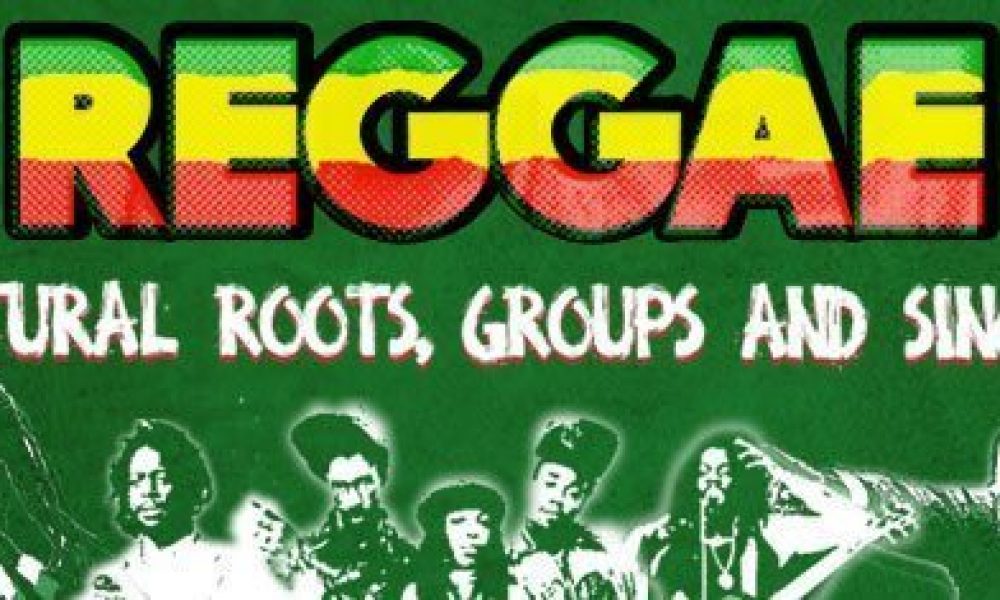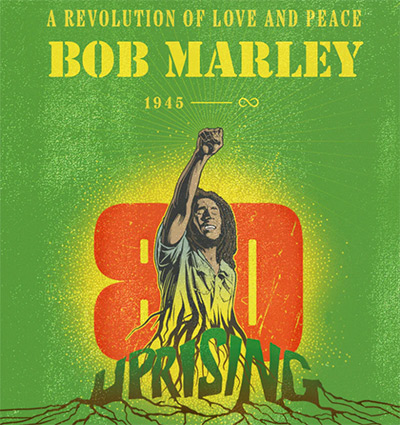Reggae – Cultural Roots, Groups And Singers

The superstardom of Bob Marley is a stark contrast to the life he came from, shared and still exists for the sufferers in the ghettos of Kingston, Jamaica. Those with enough talent and determination found a way out of the ghetto through music. It was, and remains, an escape route from poverty. Some who made it into the downtown studios in the late 1960s and 1970s sang their heartfelt messages of Rastafari, liberation and freedom that still resonate around the world today.
Jamaica gained independence from Britain in 1962. The optimism of the island could be heard in the music of the sixties. Ska and Rocksteady topped the charts home and abroad, but the beat slowed to Reggae at the end of the decade. The upbeat, positive message of the Rastafarians was permeating society and the musicians and singers of Kingston. They would go on to sing of politics, oppression, poverty in everyday life. Hope was offered in Rastafarian views and its peace and love ethos.
Coming out of a slave-based colony, the Rastafarians emerged in 1930’s Jamaica. The teachings of Marcus Garvey were to influence the likes of preachers Leonard Howell and Joseph Hibbert. Garvey had formed the United Negro Improvement Association, he advocated unity, equality and self-reliance for the displaced African peoples of North, Central and South Americas and Caribbean. Marcus prophesied, “Look to Africa when a King is crowned, for your redemption is at hand.” In a colonial society, where despite the abolition of slavery, the colour of your skin tragically defined your position. The sight of a black Emperor been crowned in Ethiopia with European royalty and leaders kneeling at his feet was a great inspiration to many of the African diaspora. Haile Selassie’s coronation was on 2nd November 1930. He was crowned the “King of Kings, Lord of Lords, Conquering Lion of the Tribe of Judah” a direct descendant of biblical King Solomon.
The Rastafarian movement was born declaring Selassie a living God. Early leader Howell developed a community of believers. He established a cooperative at Pinnacle, an old plantation near Spanish Town in the Parish of Saint Catherine. It was a very organised socially and virtually self-sufficient but very much at odds with the British colonial rule. The Rastas suffered much oppression in the early years. They persevered and differing sects emerged. The very orthodox, turban-wearing Bobo Shantis, The Twelve Tribes Of Israel (Bob Marley became a member)and the Nyabinghis are the main “Houses” or “Mansions” of Rastafari. The Youth Black Faith movement in the late ’50s and ’60s developed dreadlocks as their distinctive hairstyle. They were opposed to society and colonialism (Babylon) and held ganja (marijuana) as a sacrament. Repatriation to Africa was what they yearned for.
When Pinnacle was finally broken up in the late 50’s many Rastas joined the influx of people to Kingston. Many settled in the Back o Wall community (literally a shantytown on the edge of downtown Kingston’s May Pen Cemetary) and Trenchtown. Here many individuals set up their own yards for reasoning (debate) and ceremonies with drumming and chanting and smoking chalices of the holy herb. In March 1958 one leader, Prince Edward Emmanuel convened three thousand ‘beardmen’ for a three-week-long ceremony. The Rastas were here to stay and would be a great influence on up and coming singers in the downtown communities.
In the sixties, many singers formed vocal trios. Harmony groups very much based on their US r’n’b counterparts were popular. There was a new wave of singers who were to take the limelight from Kingston’s core of superb musicians. Groups like the Melodians, Techniques, Tennors, Clarendonians, Paragons and of course the original Wailers. Many individual members of these early groups would become successful solo singers and or producers in their own right.
The themes of Rastafari and repatriation had been touched on by groups in the sixties, notably the earliest recordings by Burning Spear at Studio One. The Ethiopians and Justin Hinds and the Dominoes also sang cultural lyrics. April 21st 1966 had seen the visit of Haile Selassie to Jamaica. One hundred thousand Rastafarians came to meet the Emperor off the plane. The fervour they created delayed his disembarkation from the plane until Rasta elder Mortimer Planno calmed down the crowd. The movement was growing and more and more singers and musicians were taking up the faith.
By the beginning of the seventies, the social problems and increasing crime rates also were an impetus for more conscious lyrics and music being made. The influx of young men from the country coming to seek their fortunes in town was a major factor in the increase in lawlessness as no jobs were to be found. This was particularly true in the crumbling tenement yards and sprawling shantytowns ever-extending in Western Kingston. Perry Henzells’ 1972 film “The Harder They Come” portrays this brilliantly and is rightfully considered an all-time classic. The two political parties, Michael Manleys’ Peoples National Party and Edward Seagas’ Jamaican Labour Party created further divisions in already desperate areas. The garrison politics made neighbours enemies, political enforcers and the gunmen made the seventies elections a bloody battlefield. “No more tribal war” sang the reflective rasta singer Little Roy.
Peter Tosh, Bunny Wailer and Bob Marley had met in Trenchtown, they were tutored by the great singer Joe Higgs and were in good company in that part of town. Ken Boothe was from Denham Town, the next community. Delroy Wilson, Alton Ellis, the Wailing Souls to name a few were all from that part of Kingston. In the early to mid-seventies, a wider global audience was noticing the roots phenomenon growing in Jamaica. Chris Blackwell and Island records signed the Wailers but there were a great number of equally talented singers waiting to be discovered.
Marley never enjoyed the same success he had abroad at home – the Jamaicans wanted their roots raw and undiluted, not like it was for white rock audiences.The homegrown superstars included Dennis Brown and Gregory Isaacs. Dennis Brown started his recording career at the tender age of thirteen. He was brought up on the corner of Orange Street and North Street. He was in the heart of the capitals music action. His career started like many others at Jamaica’s Motown equivalent Studio One. Hereunder the guidance of producer Clement ‘Coxsonne’ Dodd many an artists’ road to fame was started. Dennis had hit after hit and became the Crown Prince of Reggae. Gregory was always more of a rude boy, but had one of the most distinctive voices ever committed to record. He was born and raised in the tough Fletchers Land community only a few blocks from Dennis. The ‘Cool Ruler’ could melt girls hearts, his love songs are classics yet he made some outstanding roots tunes such as “Black against Black” and “Mr Cop”.
Outstanding roots harmony groups were very prevalent by the mid-seventies. The Abbysinians defined roots close-harmony singing. They had moved away from the US soul influence and gave their songs a deeper spiritual feel. The trio of Bernard Collins, Lynford and Donald Manning would employ Ethiopian Amharic language in some tunes. They started their own label Clinch and the first single was the legendary ‘Satta Massa Gana”(meaning to meditate and Give Thanks)Roy Cousins’ group The Royals are almost criminally unknown outside reggae circles. Cousins self-produced some all-time greats like “Pick Up The Pieces”, “Ghetto Man” and “Only Jah Knows”.More fantastic singing can be found in the work of the Wailing Souls and The Congos.
Whilst Island Records were having huge success with Bob Marley they also signed some other standout acts;Third world, The Heptones and Black Uhuru who teamed up with the excellent drum and bass partnership of Sly Dunbar and Robbie Shakespeare. Virgin Records wasn’t going to miss out on the wave of popular roots. Two more of Jamaicas’ finest harmony groups, The Gladiators and the more rural sounding Mighty Diamonds put pen to Richard Branson’s’ paper. Culture led by the late great Joseph Hill was also signed and had a massive hit with “Two Sevens Clash” that described the awe in Jamaica of the auspices of the meeting of calendar dates 7thday of 7th month July in 1977.
As one can see there has never been a dearth of talent in reggae. There is an infinite number of great cultural solo singers too. Johnny Clarke and Barry Brown were hugely popular on the local scene in the mid-seventies. “Move Out of Babylon” and “Roots Natty Roots” by the former sum up the cultural mood prevailing. The heavy basslines were perfect sound system fodder. Horace Andys’ career has gone from strength to strength. He has had hits in every decade since he started in the sixties, he still performs today solo and alongside Massive Attack.
More rootical heroes would emerge from Greenwich Farm. This small community with its fishing beach on Kingstons’ harbour would produce luminaries such as Prince Allah, Earl Zero, Rod Taylor and Phillip Fraser. The town wasn’t the only place for reggae legends to develop. Up on Jamaicas’ North Coast lies the lush garden parish of St Anns. The island’s countryside is stunning and it is fitting that great cultural and spiritual roots singers come from here. Fifteen miles from Bob Marleys birthplace of Nine Mile lies the parish capital St.Anns Bay. Marcus Garvey was born here as was the man whos’ work heavily features and promotes Garveys’ words. After Studio One, Burning Spear aka Winston Rodney worked with North coast producer and sound system operator Jack Ruby he created some of the ‘dreadest’ music. Classics like “Marcus Garvey” and “Slavery Days” were made as a trio with Delroy Hines and Rupert Wellington. He would go on as a soloist making tunes like “Throw Down Your Arms” and “Travelling”. To this day he still mesmerises audiences, almost spiritual hypnotism.
It is staggering how much great music has come from Jamaica. The population is just three million, it is only one hundred and fifty miles wide. Against all odds, it has and continues to fill the world with positivity. A new generation of ghetto saints are recording uplifting message music, long may it continue.












